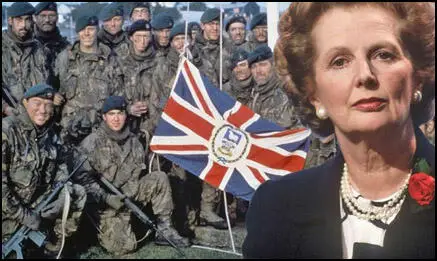On this day on 2nd April
On this day in 1502 Prince Arthur dies. Catherine of Aragon married Arthur on 14th November 1501, at St Paul's Cathedral in London. That night, when Arthur lifted Catherine's veil he discovered a girl with "a fair complexion, rich reddish-gold hair that fell below hip-level, and blue-eyes". (15) Her naturally pink cheeks and white skin were features that were much admired during the Tudor period. Contemporary sources claim that "she was also on the plump side - but then a pleasant roundness in youth was considered to be desirable at this period, a pointer to future fertility".
The couple spent the first month of their marriage at Tickenhill Manor. Arthur wrote to Catherine's parents telling them how happy he was and assuring them he would be "a true and loving husband all of his days". They then moved to Ludlow Castle. Arthur was in poor health and according to William Thomas, Groom of his Privy Chamber, he had been over-exerting himself. He later recalled he "conducted him clad in his night gown unto the Princess's bedchamber door often and sundry times."
Alison Weir has argued that Arthur was suffering from consumption: "There was concern about the Prince's delicate health. He seems to have been consumptive, and had grown weaker since the wedding. The King believed, as did most other people, that Arthur had been over-exerting himself in the marriage bed." Almost thirty years later Catherine deposed, under the seal of the confessional, that they had shared a bed for no more than seven nights, and that she had remained "as intact and incorrupt as when she emerged from her mother's womb".
Antonia Fraser, the author of The Six Wives of Henry VIII (1992) has argued that she believes the marriage was unconsummated. "In an age when marriages were frequently contracted for reasons of state between children or those hovering between childhood and adolescence, more care rather than less was taken over the timing of consummation. Once the marriage was officially completed, some years might pass before the appropriate moment was judged to have arrived. Anxious reports might pass between ambassadors on physical development; royal parents might take advice on their offsprings' readiness for the ordeal. The comments - sometimes remind one of those breeders discussing the mating of thoroughbred stock, and the comparison is indeed not so far off. The siring of progeny was the essential next step in these royal marriages, so endlessly negotiated." Fraser goes on to argue that the Tudors believed that bearing children too young might damage their chances of having further children. For example, Henry VII's mother, Margaret Beaufort, was only thirteen when she had him and never had any other children in the course of four marriages.
On 27th March 1502, Arthur fell seriously ill. Based on the description of symptoms by his servants, he appeared to have been suffering from a bronchial or pulmonary condition, such as pneumonia, tuberculosis or some virulent form of influenza. David Starkey has suggested he might have been suffering from testicular cancer. Antonia Fraser, believes that as Catherine was also ill at the same time, the both might have had sweating sickness.
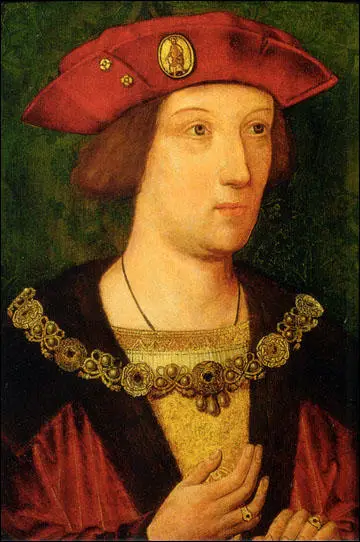
On this day in 1827 artist William Holman Hunt is born. John Everett Millais became friends with Holman Hunt, a fellow student at the Royal Academy School. They both rejected the ideas of Joshua Reynolds, who argued in his famous Seven Discourses on Art, that young British artists should follow in the Renaissance tradition, to admire the work of Raphael, and to aspire to the classical ideal "that perfect beauty never found in nature but attainable by the artist through careful selection and improvement". Hunt and Millais reacted against this view and in September 1848 they joined up with Dante Gabriel Rossetti, Thomas Woolner and James Collinson to establish what became known as the Pre-Raphaelite Brotherhood (PRB). Other artists such as Charles Allston Collins and Ford Madox Brown were closely associated with the group but were never official members of the PRB.
The Pre-Raphaelites focused on serious and significant subjects and were best known for painting subjects from modern life and literature often using historical costumes. They painted directly from nature itself, as truthfully as possible and with incredible attention to detail. They were inspired by the advice of John Ruskin, the English critic and author of Modern Painters (1843). He had encouraged artists to "go to Nature in all singleness of heart rejecting nothing, selecting nothing, and scorning nothing."
On the 7th May, 1851, The Times accused John Everett Millais, William Holman Hunt and Charles Allston Collins of “addicting themselves to a monkish style”, having a “morbid infatuation” and indulging in “monkish follies”. Finally, the works are dismissed as un-English, “with no real claim to figure in any decent collection of English painting.” Six days later John Ruskin had a letter published in the newspaper, where he came to the defence of the Pre-Raphaelite Brotherhood. In another letter published on 30th May, Ruskin claimed that PRB “may, as they gain experience, lay in our land the foundations of a school of art nobler than has been seen for three hundred years”.
Ruskin now published a pamphlet entitled, Pre-Raphaelitism (1851). He argued hat the advice he had given in the first volume of Modern Painters had “at last been carried out, to the very letter, by a group of young men who... have been assailed with the most scurrilous abuse... from the public press.” Aoife Leahy has argued: "Ruskin’s defences had now taken a new and decidedly evangelical tone. he had formed friendships with the Pre-Raphaelite artists on the basis of his letters to The Times and, just as significantly, he had been personally harassed by members of the public for his views."
However, most art critics agreed with Dickens rather than Ruskin. As Lucinda Hawksley has pointed out: "Millais... was one of seven young artists, all of whom were Royal Academy trained, who formed a group called the Pre-Raphaelite Brotherhood (known as the PRB). They disagreed with many of the principles of art as defined by the rigid government of the Royal Academy and wanted to paint in the style that had been popular in Italy before the advent of Raphael. When the authorities and the public discovered - by an unfortunate chance - what the letters PRB stood for, they were furious at the group's perceived arrogance and actively turned against them, their followers and anyone who assumed a Pre-Raphaelite style of painting. It was several years before artists who painted in this style were accepted back into mainstream galleries. Millais was one of the fortunate few who was not ruined by the furore, largely because he was kept financially secure by family money."
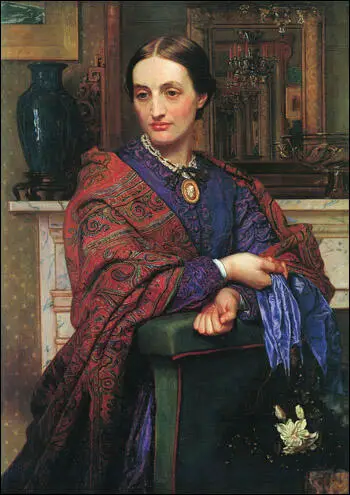
On this day in 1902 Dmitry Sipyagin, Minister of Interior of the Russian Empire, is assassinated. The previous year Catherine Breshkovskaya,, Victor Chernov, Gregory Gershuni, Alexander Kerensky and Evno Azef, had established the Party of Socialist Revolutionaries (SR). The main policy of the SR was the confiscation of all land. This would then be distributed among the peasants according to need. The party was also in favour of the establishment of a democratically elected constituent assembly and a maximum 8-hour day for factory workers.
The Socialist Revolutionaries also had a terrorist wing, the SR Combat Organization. Membership of this group was secret and independent of the rest of the party. Gregory Gershuni, became its head and was responsible for planning the assassination of Sipyagin. This was carried out by Stepan Balmashov. A military tribunal sentenced him to death by hanging. The execution took place in the fortress of Shlisselburg in May 1902.
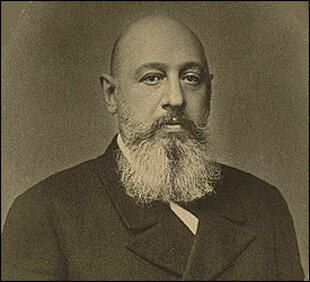
On this day in 1918 war ace James McCudden was awarded the Victoria Cross. McCudden, the son of a soldier, was born in Gillingham, Kent on 28th March, 1895. In 1910 McCudden joined his father in the Royal Engineers as a bugler. When war was declared in 1914, McCudden was an aircraft mechanic in the Royal Flying Corps. He served in France as an observer and gunner before returning to England to train as a pilot.
McCudden was an exceptional pilot and on 2nd April was awarded the Victoria Cross for "accounting for 54 enemy aeroplanes". McCudden was killed on 9th July, 1918, at Auxi le Chateau when his aircraft stalled soon after take off.
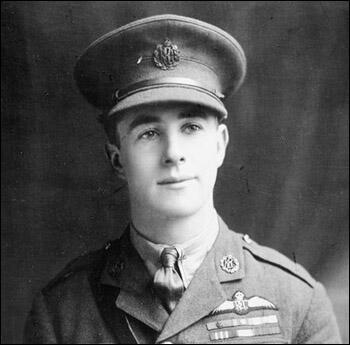
On this day in 1938 David Doran was killed fighting in the Spanish Civil War. David Doran, the son of a paper-mill worker, was born in Albany, New York, in 1909. His father had emigrated from Russia in 1907 where he found work as a cigar maker. As a boy Doran sold the Albany Times and delivered groceries.
Doran left school at the age of sixteen and found work as a seaman on a tanker owned by Morgan Line. While at sea he read a lot including the works of Upton Sinclair, John Galsworthy and Joseph Conrad.
In 1929 he developed scurvy and when he recovered he found work with his uncle who was a sign painter in New York City. He began to mix with members of the Industrial Workers of the World but in 1930 he joined the Young Communist League. He agreed to go to the Deep South to build up membership of the YCL among the unemployed. He arrived at Chattanooga on a budget of three dollars a week. In Scottsboro, Alabama, he was beaten up after he became involved in the campaign to free the Scotsboro Boys.
In 1931 he joined the American Communist Party and worked as a trade union organizer with agricultural workers (Alabama), textile workers (North Carolina) and coal miners (Pennsylvania). By 1936 he was the party's director of trade union activities.
On the outbreak of the Spanish Civil War Doran wanted to immediately join the Abraham Lincoln Battalion, a unit that volunteered to fight for the Popular Front government against the military uprising in Spain. The party rejected the idea claiming he was more important to the cause in America.
After the disaster of Jarama the leaders of the American Communist Party changed its mind about the role of its activists and allowed Doran, Steve Nelson, Joe Dallet and 22 other volunteers to go to Spain. While at the Tarazona training camp Doran wrote to his wife: "Trying hard to be a good soldier and fill some Fascist bellies with lead. Feel certain that I can more than hold my own when we meet the bastards out there. The tough training has really hardened and toughened me. Just what a guy needs after being a functionary of the League a number of years."
Doran first saw action at Quinto under Steve Nelson. Doran wrote to his wife after the battle: "The thing I like best is that I have gone into action against the enemy and have had ample opportunity to work under rather sharp and direct fire. Always did want to test myself and am not entirely disappointed with myself." Cecil D. Eby added: "Going into battle at Quinto as one of Nelson's juniors, Doran found that the firing line was not the picket line. In battle, something more was required than collecting scrawls on a petition or nailing a placard to a pole. It is significant that his golden moment during the battle came when he hijacked the water truck and drove it into the American lines-exactly what a dead-end kid could be expected to do."
After Steve Nelson was wounded at Belchite he was appointed brigade commissar of the Abraham Lincoln Battalion and political advisor to Vladimir Copic. He also worked closely with Robert Minor, the local American representative to the Comintern in Spain. As Cecil D. Eby, the author of Comrades and Commissars: The Lincoln Battalion in the Spanish Civil War (2007), pointed out: "He was only twenty-six. What no one knew at this time-and how they would have shuddered had they known was that Doran's ambition was to assume military command of the brigade. That moment would arrive in time, but in September 1937 it was still in the future. For the moment he had to be content with nearly absolute political power. Men had followed Nelson because they believed in him; they would obey Doran because, they feared him."
Sandor Voros observed Doran telling a group that he had the power to execute troublemakers: "The visiting delegates received this information with rapture, that was really something to take back home, to impress their friends with the importance of an American commissar they had encountered in person in Spain. It did not occur to any of them to inquire what could possibly have distorted the mind of a man that young to think of his position in those terms; to entertain the idea that it was within his power to order anyone in his sight, civilians and military personnel alike, placed before a firing squad and executed at his whim."
In the summer of 1937 Joe Dallet was appointed as the political commissar of the Mackenzie-Papineau Battalion. According to Cecil D. Eby Dallet was unpopular with the other soldiers: "No one detected the change in Joe Dallet more quickly than the men in the Mac-Paps. They were mystified by his mercurial behavior bullyragging and threatening one moment and fawning and apologizing the next. His tantrums may have derived from his upbringing as a spoiled child, alien to most of the men." Doran reported back to party officials in Albacete that "a percentage of the men openly declare that dissatisfaction with Joe Dallet and there is some talk of removal." He added: "At some future time it might be necessary to move Dallet to a less important position."
The following month the International Brigades launched an attack at Fuentes de Ebro. Robert G. Thompson selected Joe Dallet to lead the men into battle. Cecil D. Eby has speculated: "Was it true, what some men have said, that he walked like a man dazed, drugged, or dead? Did he perhaps wonder whether the bullet that would kill him would come from the front or the back? In his book, American Commissar (1961) Sandor Voros claims that Dallet was hit in the groin and was trying to craw back unaided when he was killed by machine-gun fire.
In March 1938 David Doran was sent to the Aragón front. Later that month David Doran was reported missing with Robert Merriman while fighting at Gandesa. The following year Edwin Rolfe wrote in The Lincoln Battalion that they were killed by crossfire while on the road to Corbera on 2nd April, 1938.
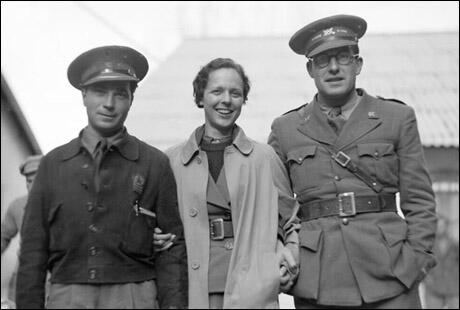
On this day in 1938 Robert Merryman was killed fighting in the Spanish Civil War. Merriman, the son of a lumberjack, was born in the United States on 17th November 1908. While studying economics at University of Nevada he spent two years in the Reserve Officers' Training Corps because it paid seven and a half dollars a month. He also worked as a ranch hand, cement worker and pulp feeder to help finance his studies.
After completing his studies Merriman began teaching at University of California. While in California he became active in left-wing politics and supported the San Francisco General Strike. Merriman also won the Newton Booth Travelling Fellowship. This enabled him to study agricultural problems in different countries in Europe.
In 1937 Merriman joined the Abraham Lincoln Battalion, a unit that volunteered to fight for the Popular Front government during the Spanish Civil War. He joined the other International Brigades at Albacete and as he spent two years in the Reserve Officers' Training Corps at the University of Nevada, he was recruited to train recently arrived volunteers from America.
Working under James Harris, a former sergeant in the United States Army, Merriman taught the men how to fieldstrip rifles and machine-guns. He also organized a series of lectures on scouting, fortifications and signaling.
His wife, Marion Merriman, joined him in Spain and became the only woman to become a full member of Abraham Lincoln Battalion. She served as an administrative officer until being sent home in November 1937 to begin a speaking tour of the United States.
After failing to take Madrid by frontal assault General Francisco Franco gave orders for the road that linked the city to the rest of Republican Spain to be cut. A Nationalist force of 40,000 men, including men from the Army of Africa, crossed the Jarama River on 11th February, 1937.
General José Miaja sent three International Brigades to the Jarama Valley to block the advance. Led by Merriman, the 373 members of the brigade moved into the trenches on 23rd February. When the were ordered over the top they were backed by a pair of tanks from the Soviet Union. On the first day 20 men were killed and nearly 60 were wounded.
On 27th February 1937, Colonel Vladimir Copic, the Yugoslav commander of the Fifteenth Brigade, ordered Merriman and his men to attack the Nationalist forces at Jarama. As soon as he left the trenches Merriman was shot in the shoulder, cracking the bone in five places. Of the 263 men who went into action that day, only 150 survived. Merriman was now replaced by Oliver Law as battalion commander. It was the first time in American history that an integrated military force was led by an African-American officer.
When Merriman recovered from his wounds he was appointed as brigade chief of staff of the Mackenzie-Papineau Battalion. The next major action involving the International Brigades took place during the Aragón offensive at the end of August 1937. The campaign began with an attack on the town of Quinto. This involved dangerous street fighting against snipers that were within the walls of the local church. After two days the Americans were able to clear the town of Nationalist forces. This included the capture of nearly a thousand prisoners.
The Lincoln-Washington Battalion then headed towards the fortified town of Belchite. Once again the Americans had to endure sniper fire. Merriman ordered the men to take the church. In the first assault involving 22 men, only two survived. When Merriman ordered a second attack, Hans Amlie at first refused saying the task of taking the church was impossible. He help Amlie, Steve Nelson led a diversionary attack. This enabled the Lincoln-Washington Battalion to enter the town. The Americans suffered heavy casualties, Nelson and Amlie received head wounds and amongst the dead were Wallace Burton, Henry Eaton and Samuel Levinger.
In March 1938 Robert Merryman returned to the Aragón front. Milton Wolff was now battalion commander and John Gates was battalion commissar. Later that month Robert Merriman was reported missing with David Doran while fighting at Gandesa. The following year Edwin Rolfe wrote in The Lincoln Battalion that they were killed by crossfire while on the road to Corbera on 2nd April, 1938.
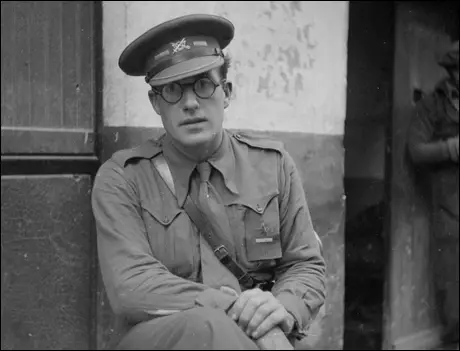
On this day in 1982 Argentina invaded the Falkland Islands. The following day the United Nations passed resolution 502 demanding that Argentina withdrew from the Falklands. On 5th April the British Navy left Portsmouth for the Falklands. Britain declared a 200 mile exclusion zone around the Falklands and on 2nd May 1982 the Argentinean battleship General Belgrano was sunk. Two days later HMS Sheffield was hit by an exocet missile. British troops landed on the Falkland Islands at San Carlos on 21st May. Fighting continued until Port Stanley was captured and Argentina surrendered on 14th June 1982.
According to Ipsos UK Research in March 1981 only 16% of the public asked were satisfied with Margaret Thatcher as prime minister. This was the lowest rating since this kind of information was recorded. However, after the recapture of the Falklands 59% were satisfied with her performance. This was higher than any prime minister had achieved. Only Tony Blair's government, for a few months when he first took office and later briefly after the 9/11 attacks, ever had similar satisfaction ratings in Ipsos polls. The Falklans War helped Thatcher and the Conservative Party to win the 1983 General Election with a majority of 144.
